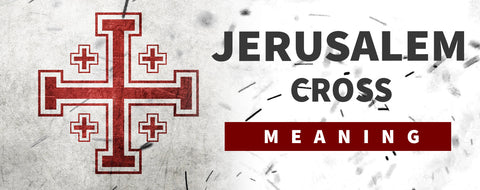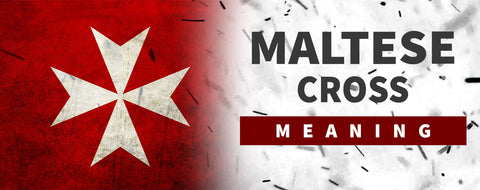
Hugues de Payns : An Enigmatic Man
of reading - words
Who is Hugues de Payns ? One can think that like the other young noblemen of his time, he became an adult around the age of fourteen, then squire of a knight of his entourage, perhaps of the Count of Champagne himself, and finally knight himself. He received his fiefdom from Payns, either as an inheritance from his father, according to the custom that was beginning to spread in the 10th century, or directly from the Count of Champagne.
Mystery already surrounds the birth of Hugues Payns, the first Grand Master and official founder of the Order. Some historians place him in the Ardeche, but most agree that he originated from Champagne.
Let's dive together into the life of Hugues de Payns. An enigmatic man with an unfailing determination and a unique sense of nobility !

The Legend Concerning Its Origins
To this day nobody is able to provide the beginning of a proof concerning his birth, some say he was born in Brittany, others in the Ardeche, and the most people say he was born in Champagne at Payns. The problem is that no one has been able to accredit this thesis (Payns) by the slightest small proof.
In France, the official legend (which first appeared in 1804) used for his biography, but never proven by any written evidence is the following if we believe Wikipedia :
source Wikipedia :
Hugues II de Payns lived in Champagne during the first period of his life. The exact date of his birth is unknown, but we can place it between 1070 and 1080 (note the accuracy here !). It is in the year 1100, and as a witness, that he affixes his signature on two charters of Hugues de Troyes, Count of Champagne (which charters ?). It is probable that Hugues de Payns was vassal of Hugues de Troyes, close to the county family, since he was the son of one of the vassals (the lord of Montigny) of the county (here we approach the field of probability, that is to say according to the definition of the dictionary: which is not absurd, but which is not proven !). In 1095, Pope Urban II, at the Council of Clermont, triggered the crusades in the Near East. It is the massive departure of the first crusade that ended in 1099 with the Crusaders taking Jerusalem. Hugues de Payns does not take part in it, because he is still at the court of the Count of Champagne. It was later, in 1104, that he accompanied his suzerain Hugues de Champagne to the Holy Land, where he stayed for three years. Back home in 1107, Hugues de Payns was entrusted with the domain of Payns that of his ancestors (now we are in a historical drift, because if this domain was really his in 1107, it was also his in 1100 and before, and, if this was the case, there would be written proofs of his filiation !), by his suzerain.

The following year (1108) he married a noble young girl from the South of Champagne, Elisabeth de Chappes. They will have four children born between 1108 and 1114. In 1113, Hugues de Payns signed a charter of donation from the Count of Champagne. The document bears the following inscription: "Hugo, dominus (lord) of Peanz" (to the knowledge of historians, this document does not exist !). In 1115, he leaves again for the Holy Land with Hugues de Champagne, but this time he settles there definitively. One can consider that his wife died between 1113 and 1114 (more considerations !). At this stage of the legend, and according to Wikipedia, Hugues de Payns had 4 children aged from 1 to 6 years in 1114, and he was a widower. He would have abandoned his children to follow Hugues de Champagne who was going on a pilgrimage to Jerusalem in 1115 !
So much for the legend of the filiation of Hugues de Payns, who would like him to be a native of Champagne, without any document to date produced to substantiate this theory, and who would have arrived in Jerusalem in 1115 !

Factually concerning the Origins of Hugues
However, neither within the chronicles of Foucher de Chartres (present at the time of the first crusade and chaplain of Baudouin I), of Guillaume de Tyr, nor within the accounts of all the opposite narrators of the first crusade, the name "Hugues de Payns" is written there, on the opposite hand, all of them write the name "Hugues des Paiens,” related to that of "Geoffroy de Saint-Omer.” This can be surprising because once they wrote stories about the lives of important people these chroniclers were very precise within the transcription of their names ! For us, members of the Geoffroy de Saint-Omer commandery and adepts of the factual, we give all the credit that the stories of Guillaume de Tyr, Foucher de Chartres, Albert d'Aix and others, who named the two founders of the Temple, deserve: Hugues des Paiens and Geoffroy de Saint-Omer.
sources :
In all the chroniclers' accounts, only two knights are mentioned as founders of the Order : Geoffroy de Saint-Omer and Hugues des Païens.
- Stories of four participants in the crusade: Foucher de Chartres, Raymond d'Aguilers, Pierre Tudebode and the anonymous editor of the Gesta Francorum.
- Stories of three other clerics who did not participate in the expedition but who received first-hand information: Baudri de Bourgueil (or de Dol), Robert le Moine, and Guibert de Nogent.
- Stories of Albert of Aix, whose importance was discovered late by modern historians.
- In the 13th century, Jacques de Vitry, historian and Archbishop of Acre, will also relate the events that took place in the Near East without contradicting William of Tyre (Robert Burchard Constantijn Huygens, E. J. Brill 1960 | Reports of crusades).
- Later Ernoul (Écuyer de Balian d'Ibelin) will also write Templar chronicles in the continuity of those of Guillame de Tyr (Chronique d'Ernoul et de Bernard Le Trésorier, edited by L. de Mas-Latrie for the Society of the History of France, Paris, 1871).
- Michel le Syrien (Syrian Christian) also recounted the history of the Templars and the Latin States at the end of the 12th century without denying that Guillaume de Tyr (Chronicle of Michel le Syrien, French translation (volumes 1 to 3) and Syriac text (volume 4) by J.-B. Chabot, 4 volumes, Pierre Leroux editor, Paris 1899-1901-1905-1910).
Why Hugues des Païens instead of Hugues de Payns ?
Thus, as early as 1804, writers specialized in Templarism (literature that had become very fashionable) decided to change the name of the founder of the Order (Hugues des Païens) in Hugues de Payns.
You know that Geoffroy de Saint-Omer had brothers who left like him during the first crusade in the Army of Godefroy de Bouillon. One of them was called Hugues, and in Flanders everyone nicknamed him Hugues the Pagan ! Admit that there is, to say the least, food for thought !
It may well be that these two Hugues are one and the same person, that this Hugues de Payns is Hugues of the Pagans. This hypothesis is credible because, for example, on the seal of the Templars, we see 2 riders on the same horse, which has generated a multitude of different interpretations about the symbolism of this seal. For example, a contemporary legend suggests that this symbol represents the poverty of the order at its origin, and that the Templars had to share a horse for two men ! This hypothesis is unlikely because articles 33 & 34 of the Order's rule are precise, they define that the Knights Templar must have at least 1 horse and 1 squire, the rule, moreover, recommends that it is preferable for the Knights Templar to have three horses. This rule is therefore in contradiction with the emblem of the Knights Templar (representing 2 riders on the same horse !), this emblem is for the time not very common, incongruous, even improbable because contrary а the rule but especially contrary to the conventions of the time.

We have another explanation concerning the symbolism of this seal.
We think that Hugues des Païens is not this man from Champagne whose name was very late (1804) renamed "Hugues de Payns,” and for whom nobody has ever been able to produce the slightest proof of his birth in Champagne. We think that Hugues des Païens (quoted as such by Guillaume de Tyr, Foucher de Chartres present at the time of the great crusade alongside Baudoin de Boulogne, then by all the other narrators) was the brother of Geoffroy de Saint-Omer whom everyone called "Hugues le Païen.” And in these conditions all the hypotheses put forward for centuries to explain the symbolism of this seal become null and void. If we are right, the explanation of the symbolism of this seal becomes very clear, and this emblem would have been adopted in honor of the two founders of the Order Hugues le Païen de Saint-Omer and Geoffroy de Saint-Omer his brother, and, as these two knights were brothers by blood, morality did not suffer.
A little common sense to conclude this chapter
According to legend, Hugues de Payns arrived in Jerusalem in 1115, and it was he who, having just arrived in the Holy Land, took the initiative to create the Templar Order (nothing less !).
Factually, in 1115 Geoffroy de Saint-Omer and his brothers Hugues and Gerard (friends of the King of Jerusalem, Baudouin de Boulogne) had been in Jerusalem since July 15, 1099, they had (if I may express myself thus) 16 years of seniority on the Holy Places, and above all they had participated in countless battles since their departure from Saint-Omer in 1096 !

The Saint-Omer brothers and their companions of the time must have been hardened men in 1115, and if we are to believe this legend (Hugues de Payns, a native of Champagne), it was a newcomer, a worker of the 11th hour who would have dictated his law to these fearless warriors in whom the King of Jerusalem had full confidence ?
It takes imagination to accept to believe such a thing !
For us, the two founders of the Temple are Geoffroy de Saint-Omer and his brother Hugues le Païen, and the Order paid tribute to them by adopting the seal of the two Templars on the same horse. The members of our commandery will continue without respite their research work concerning this Hugues des Païens, in order to perhaps one day be able to know the truth about this character.
The hope of one day knowing the truth
In 2014 an original edition of the complete works of the author of "Hamlet" was found by a miracle, this work had been sleeping for over two hundred years in the shelves of the library of Saint-Omer.
We remain hopeful that one day at Saint-Omer in Arras in Paris or elsewhere we will discover the documents that will put an end to centuries of questioning about the true identity of the second founder of the Order, Hugues des Païens !







Anil Uner Erden
I loved this story so much Long Live Christianity, White Jesus Christ, White Christian Deus Vult and all Churches.
Guy Bullock
I find this extremely fascinating and history has proven so many things about religion and other things over in that region of the world
Terry Payne
Very interesting
Suzanne
I think he is Hugh son of Ralph St. John-Paynel. Ralph through his mother was related to those in Champagne and Chartres. Paynel was the name given to Ralph’s father Wimund/William de Moulins son of Wimund de Avranches after he acquired la Haye-Pesnel in Normandy. He was not happy with lands in England and returned to France where he built a castle/manor there called la Haye-Pesnel. The family then became known as Paynel, Payne, Paganellus, and various other spellings in England, France and Italy. There was apparently a letter Hugh wrote where he stated at the time his father was in Italy. Wimund in Italy used the spelling Pagano. I think this is where you get Pagan but interpret it as a religious belief rather than a variation of a place – La Haye-Pesnel.
There were several Knights Templars from the St. John family, namely, William St. John the last archbishop of Nazarene. Peter St. John of Chateau-le-Rennes, and my ancestor Alexander St. John of Templeton, Devon. Acre was originally called under Norman control St. John of Acre in 1104.